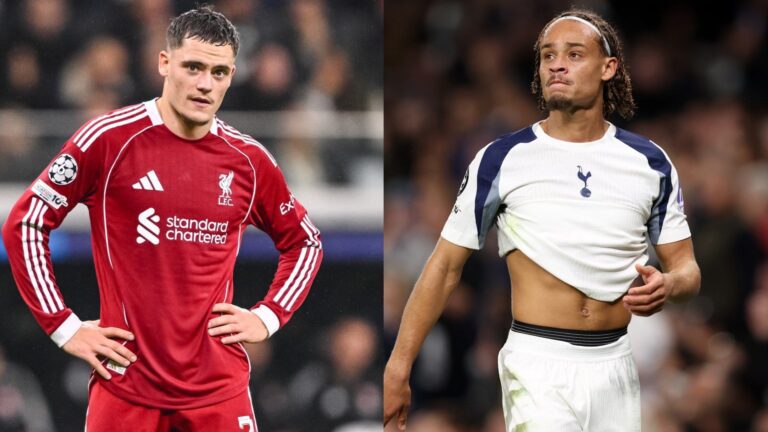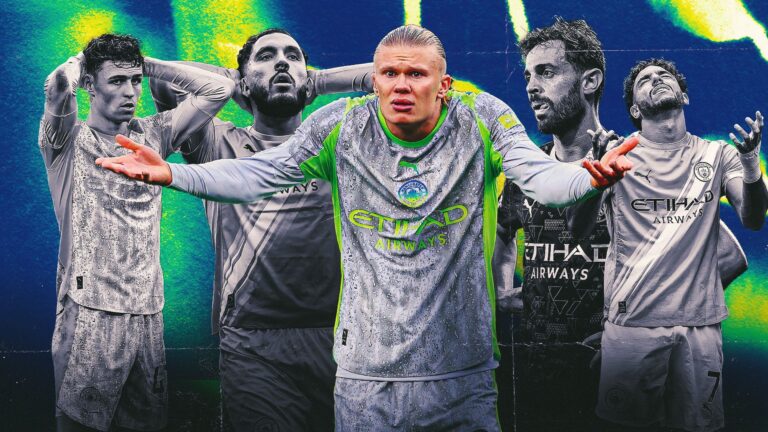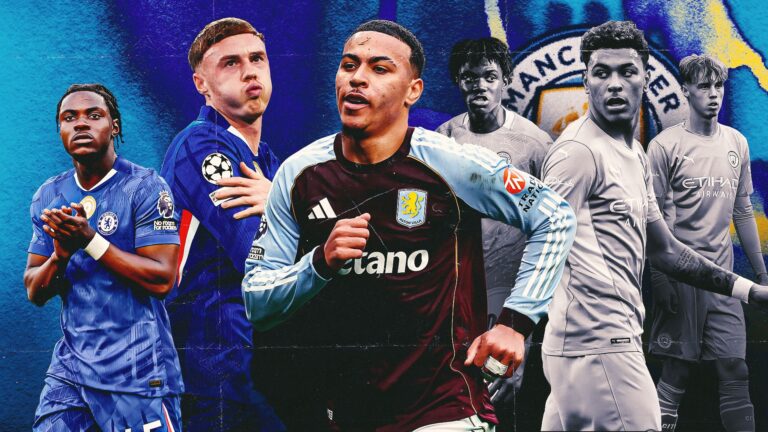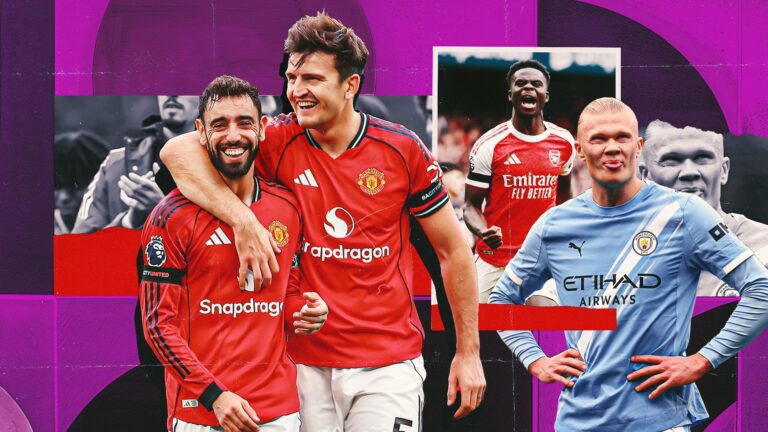Discover the Thrilling World of FIFPRO Men’s World 11: Ranking the Ultimate Teams
The excitement in sports often stems from endless arguments and speculations: How might one superstar fair against another? Which squad could triumph over that one? What makes a particular era stand out? While matches themselves deliver thrills, the passionate discussions they spark are just최, sometimes sparking intense rivalries and debates. Among these, FIFPRO Men’s World 11 stands as a prime example, highlighting elite talent selected by players worldwide.
Diving into FIFPRO Men’s World 11 teams from various years reveals a blend of subjectivity and fascination, as comparing eras invites personal opinions and excitement. Launched in 2005, this selection process gathers votes from international athletes to form dream squads featuring the sport’s finest. Picturing these legends united on a single field is mesmerizing, especially with the 2025 lineup set to be revealed on November 3, featuring strong contenders. Before that unveiling, let’s reflect on history’s highlights, showcasing squads with iconic figures who have claimed ultimate glory. Here, we rank the top five FIFPRO Men’s World 11 lineups, offering a fresh take on their strengths and legacies.

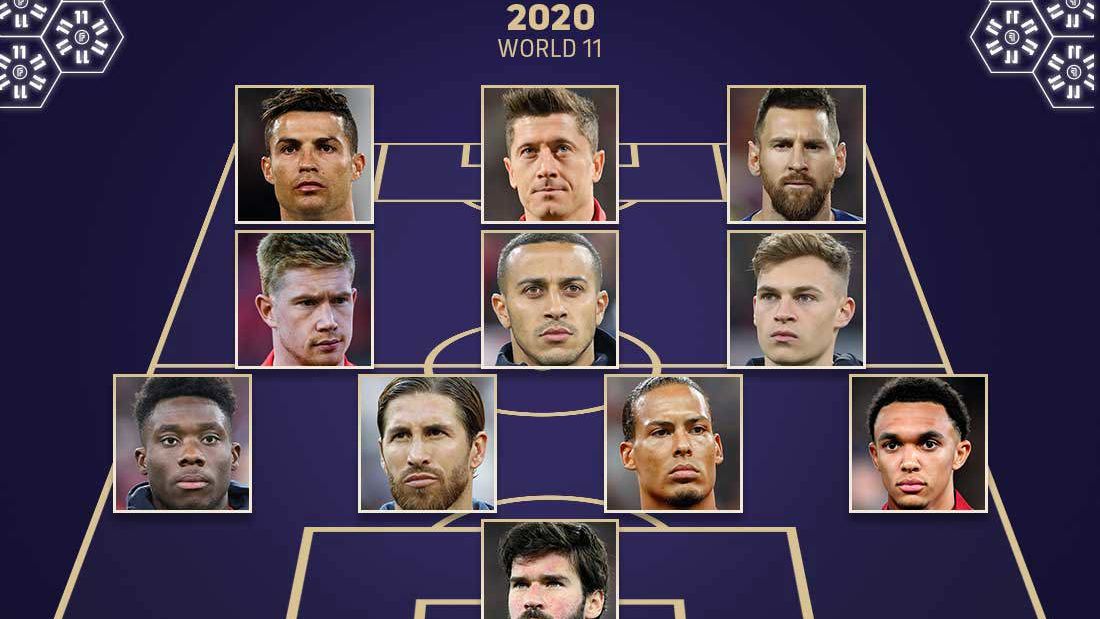
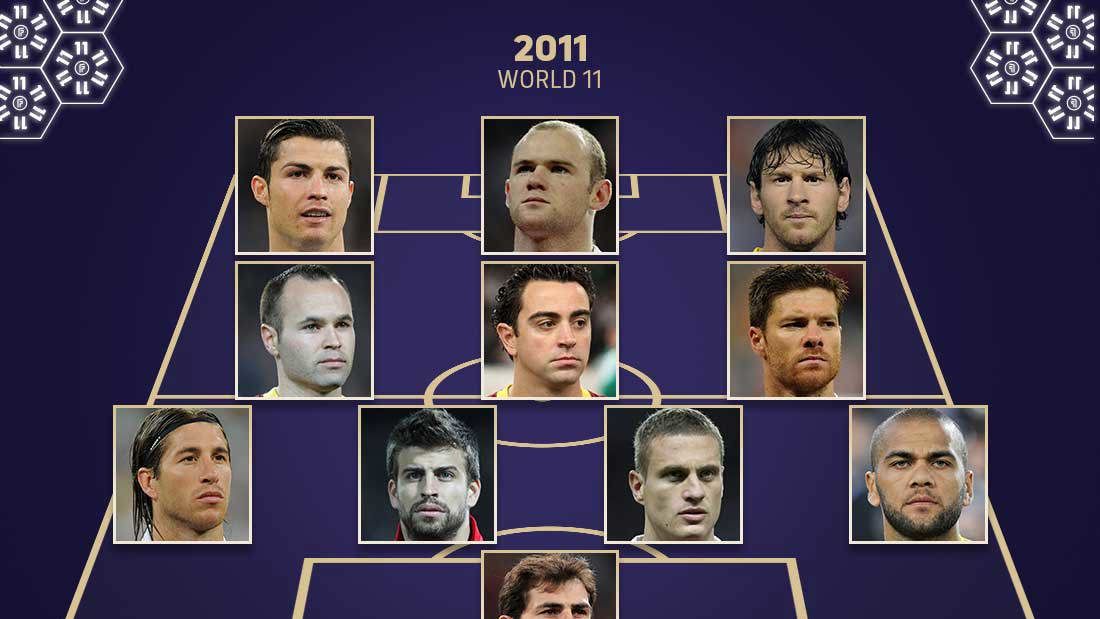

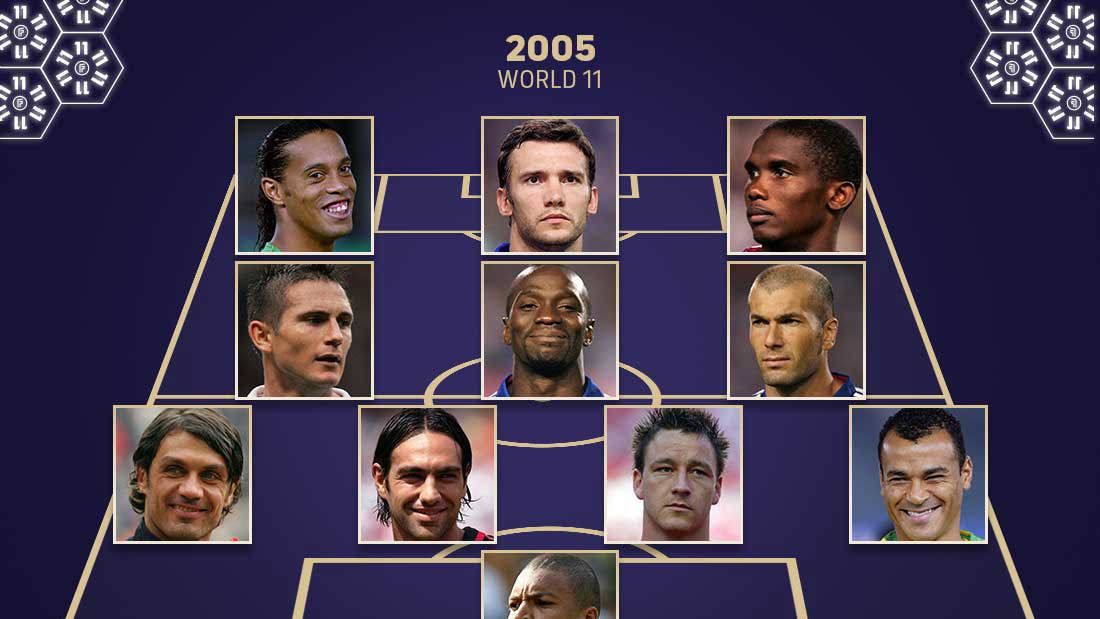

5. Explosive Offense in the Modern Era: A Dynamic FIFPRO Men’s World 11 Lineup
This assembly boasts an overwhelming focus on forward prowess, making it a spectacle of scoring potential. Up front, stars like Cristiano Ronaldo from Portugal, Robert Lewandowski of Poland-riding high from his stellar season with Bayern Munich-and Lionel Messi of Argentina form a trio capable of overwhelming defenses. Supporting them are versatile fullbacks such as Trent Alexander-Arnold from England and Alphonso Davies from Canada, known for their offensive contributions. In midfield, players like Kevin De Bruyne of Belgium and Thiago from Spain orchestrate plays, while Joshua Kimmich of Germany, alongside Sergio Ramos of Spain and Virgil van Dijk of the Netherlands, ensures stability, with Alisson from Brazil guarding the net.
Such a setup promises a barrage of goals, turning games into high-octane affairs. Yet, one might ponder if this emphasis on attack compromises defensive resilience compared to other elite teams. Nonetheless, for fans craving non-stop action, this squad delivers unparalleled thrill.
4. Spanish Mastery on Display: The Backbone of a Golden FIFPRO Men’s World 11 Era
The forward line, featuring Cristiano Ronaldo of Portugal, Wayne Rooney from England, and Lionel Messi of Argentina, naturally draws eyes, but the real strength lies in the team’s core from Spain’s dominant phase around 2011. Midfield maestros Andres Iniesta, Xavi, and Xabi Alonso from Spain ensure seamless coordination and possession dominance. Defensively, Sergio Ramos and Gerard Pique from Spain anchor the backline, with Iker Casillas in goal providing reliability, while Dani Alves from Brazil and Nemanja Vidic from Serbia add balance and grit.
This lineup exemplifies perfect harmony, with Alves’ familiarity from his Barcelona days fostering team synergy. The defensive fortitude is legendary, minimizing errors, and assuming Rooney’s work rate up front, the unit remains unyielding. Overall, it embodies a transformative period in the sport that many regard as its peak.
3. Balanced Brilliance: Defending with Finesse in a Top FIFPRO Men’s World 11
Positioning Cristiano Ronaldo of Portugal in midfield alongside Steven Gerrard from England and Kaka from Brazil might raise eyebrows, but the defensive lineup justifies the risk. With Carles Puyol from Spain, Fabio Cannavaro from Italy, John Terry from England, and Alessandro Nesta from Italy holding the fort, this team can afford an aggressive approach. Up front, Lionel Messi of Argentina leads, supported by Didier Drogba from Côte d’Ivoire and Ronaldinho from Brazil.
This squad combines speed, skill, strength, and imagination, launching attacks with relentless pressure while relying on the back four for security. It’s all about solid protection at the rear, swift transitions forward, and versatile midfielders, resulting in a near-flawless composition.
2. Defensive Dominance and Precision: The Pinnacle of FIFPRO Men’s World 11 Balance
Though some might note the absence of a player like Steven Gerrard, whose feats in key matches stand out, this team still shines brightly. The defense, featuring Paolo Maldini from Italy, Alessandro Nesta from Italy, John Terry from England, and Cafu from Brazil, is virtually impenetrable, with Nesta and Terry forming an ironclad center. Midfield balance comes from Claude Makelele’s defensive work supporting Frank Lampard from England and Zinedine Zidane from France.
In attack, the dynamism of Ronaldinho from Brazil and Samuel Eto’o from Cameroon complements Andriy Shevchenko’s clinical finishing from Ukraine. This configuration stands out for its equilibrium, potentially outmatching others in a real contest, even if some lineups boast more raw star power.
1. Unmatched Versatility: The Elite FIFPRO Men’s World 11 of All Time
Spotting any vulnerability in this team proves challenging. The front three of Lionel Messi from Argentina, Cristiano Ronaldo from Portugal, and Luis Suarez from Uruguay represent peak performance in offense. Midfield features Andres Iniesta from Spain alongside Toni Kroos from Germany and Luka Modric from Croatia, blending creativity and control. Defensively, Marcelo from Brazil, Sergio Ramos from Spain, Gerard Pique from Spain, and Dani Alves from Brazil showcase top-tier rivalry dynamics, with Manuel Neuer from Germany in goal sealing the deal.
This lineup combines exceptional talent with tactical depth, ready to compete against any historical assembly, making it a benchmark in the world of FIFPRO Men’s World 11.
Understanding FIFPRO Men’s World 11
The FIFPRO Men’s World 11 is an annual selection of the best soccer players based on votes from professional players worldwide, highlighting elite talent in the sport. This recognition, which started in 2005, showcases a dream team across positions like goalkeepers, defenders, midfielders, and forwards. When we talk about ranking the top five FIFPRO Men’s World 11s, we’re focusing on lineups that featured soccer legends like Lionel Messi, Cristiano Ronaldo, and Luis Suárez, forming what many call a “dream attack.” These rankings are based on factors such as player performance, team dominance, and overall impact on the game.
Criteria for Ranking the Top Five FIFPRO Men’s World 11s
To rank these teams, we consider elements like the quality of players selected, their collective achievements in that year, and how they influenced global soccer trends. Metrics include major tournament wins, individual awards, and the star power of forwards like Messi, Ronaldo, and Suárez. For instance, years with a “dream attack” trio or duo often rank higher due to their goal-scoring prowess and ability to dominate matches.
- Player Voting Process: Over 25,000 professional players vote annually, making this one of the most democratic ways to select the best soccer players.
- Key Positions Spotlighted: Goalkeepers, defenders, midfielders, and attackers are evaluated, with a special emphasis on how forwards like Messi and Ronaldo elevate the team’s ranking.
- Historical Context: Rankings favor eras where the FIFPRO World 11 included multiple Ballon d’Or winners, enhancing its appeal for fans searching for “best soccer players” or “FIFPRO World 11 rankings.”
Top Five Ranked FIFPRO Men’s World 11s
Let’s break down the top five FIFPRO Men’s World 11s, focusing on those that featured Messi, Ronaldo, and Suárez in their prime. These rankings are derived from historical data on player stats, team successes, and fan buzz around “dream attack” lineups.
1. The 2016 FIFPRO Men’s World 11: A Peak for Ronaldo and Company
The 2016 lineup stands out as one of the most dominant, with Cristiano Ronaldo leading the charge alongside stellar defenders and midfielders. This year, Ronaldo’s incredible form at Real Madrid and with Portugal earned him a spot, making it a prime example of a “FIFPRO World 11 featuring Ronaldo.”
- Key Players: Goalkeeper Manuel Neuer, defenders like Sergio Ramos and Thiago Silva, midfield maestros like Luka Modrić, and attackers including Ronaldo and Messi.
- Why It Ranks First: Ronaldo’s 51 goals that year, including a Champions League win, combined with Messi’s creativity, created an unbeatable “dream attack.” Suárez’s influence in similar eras adds to the excitement, as fans often compare these lineups.
- Impact on Soccer Trends: This team highlighted the rise of versatile forwards, influencing searches for “Messi and Ronaldo in FIFPRO” and inspiring young players to focus on speed and precision.
2. The 2015 FIFPRO Men’s World 11: Messi’s Masterclass with Suárez
In 2015, Lionel Messi’s Barcelona dominance shone through, with Suárez joining him to form a lethal partnership. This lineup is often searched as “FIFPRO World 11 featuring Messi and Suárez,” emphasizing their synergy in a “dream attack.”
- Notable Selections: Stars like goalkeeper Gianluigi Buffon, defenders such as Gerard Piqué, midfielders like Andrés Iniesta, and forwards Messi and Suárez.
- Ranking Highlights: Messi’s 52 goals and Suárez’s 25+ contributions helped Barcelona secure a treble, making this team iconic for “best soccer players” lists. Ronaldo’s absence here was notable, but the focus on Messi-Suárez chemistry keeps it high in rankings.
- Fan Engagement: This era boosted interest in tactical analyses, with bullet points in discussions often covering how their link-up play redefined attacking strategies in modern soccer.
3. The 2017 FIFPRO Men’s World 11: Ronaldo’s Continued Reign
The 2017 selection reinforced Cristiano Ronaldo’s status as a soccer legend, with his Real Madrid heroics front and center. While Suárez wasn’t featured, the lineup’s overall strength keeps it in the top five for “FIFPRO World 11 rankings featuring Ronaldo.”
- Standout Players: Neuer in goal, a solid defensive line with Ramos, midfield control from Modrić, and attacking flair from Ronaldo and Messi.
- Reasons for This Rank: Ronaldo’s back-to-back Champions League titles and 44 goals made this a “dream attack” showcase, even without Suárez. It highlights the longevity of top players like Messi and Ronaldo in FIFPRO selections.
- Broader Influence: This team encouraged debates on “Messi vs. Ronaldo in FIFPRO,” drawing in fans who track annual updates for the latest “FIFPRO Men’s World 11.”
4. The 2019 FIFPRO Men’s World 11: A Balanced Attack with Messi
By 2019, Messi’s individual brilliance kept the lineup competitive, even as Ronaldo moved to new challenges. This ranking nods to Messi’s role in a “dream attack,” with Suárez’s past contributions in mind for context.
- Team Breakdown: Goalkeepers like Alisson Becker, defenders including Virgil van Dijk, midfielders such as Kevin De Bruyne, and attackers led by Messi.
- What Sets It Apart: Messi’s 54 goals for Barcelona underscored his value, making this a strong entry for “FIFPRO World 11 featuring Messi.” Though Suárez was at his peak earlier, this team shows the evolution of attacking play.
- SEO and Fan Insights: Keywords like “best soccer players in FIFPRO” often lead back to this year, with bullet points in online forums discussing how Messi’s vision influenced global tactics.
5. The 2022 FIFPRO Men’s World 11: Ronaldo and Suárez’s Legacy
The 2022 lineup reflects the enduring legacy of Ronaldo and Suárez, even if they weren’t at their absolute peak. This ranks fifth for its nod to a “dream attack” ethos, blending experience with emerging talent.
- Player Highlights: Goalkeepers like Thibaut Courtois, defenders such as Achraf Hakimi, midfielders including Frenkie de Jong, and forwards where Ronaldo’s presence evoked memories of past glory.
- Ranking Factors: Ronaldo’s contributions at Manchester United and Suárez’s form at Atlético Madrid added depth, making this a fitting close to our top five. It’s popular for searches on “FIFPRO World 11 featuring Ronaldo and Suárez.”
- Engaging Takeaways: This team illustrates how veterans like Messi, Ronaldo, and Suárez continue to shape “best soccer players” conversations, with bullet points in analyses often focusing on their mental toughness and adaptability.
The Dream Attack: Messi, Ronaldo, and Suárez in Action
Focusing on the “dream attack” trio, let’s explore how Messi, Ronaldo, and Suárez elevated these FIFPRO lineups through their unique styles.
How These Players Shaped FIFPRO Rankings
Messi’s dribbling wizardry, Ronaldo’s aerial prowess, and Suárez’s finishing touch created unforgettable moments. In rankings, years with any combination of these stars often score higher.
- Messi’s Role: His playmaking ability, seen in multiple top teams, makes him a cornerstone for “FIFPRO World 11 featuring Messi.”
- Ronaldo’s Dominance: Known for speed and goals, Ronaldo’s inclusions boost rankings, especially in “dream attack” scenarios.
- Suárez’s Impact: As a clinical finisher, Suárez complements the duo, enhancing team dynamics in historical contexts.
Tactical Breakdown of Their Partnerships
In various lineups, the Messi-Ronaldo-Suárez trio influenced formations like 4-3-3, emphasizing attack.
- On-Field Synergy: Messi’s passes to Suárez’s runs, backed by Ronaldo’s shots, created high-scoring games.
- Statistical Edge: Together, they contributed to over 1,000 goals, a key factor in “best soccer players” evaluations.
- Legacy for Fans: This “dream attack” keeps searches alive for “FIFPRO Men’s World 11 rankings,” inspiring debates on modern tactics.


